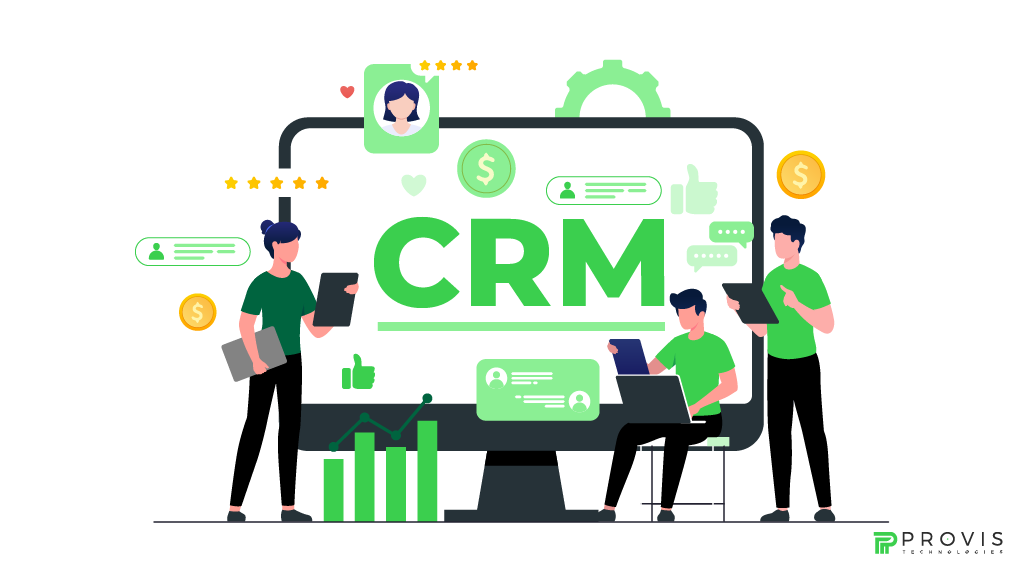In today’s fast-paced, competitively targeted business environment, Customer Relationship Management (CRM) is a tool of key success. A proper CRM has the capability to store and analyze customer information and its interaction with the business units for better relationships. If you want to learn how to build a CRM database, then you are at the right place!
Here, we will walk you through how to build your own CRM database from ground zero and give you insights into CRM customer data and how to manage them. So, let’s start down the basic marking process in detail for your convenience.
What Is CRM and Why Is It Important?
CRM means Customer Relationship Management. CRM means the activities, techniques, and tools employed in business organisations to interact with customers and handle the information gathered from them. Let us then understand that the main objectives of CRM are relationship enhancement, process efficiency, and profitability enhancement.
A well-managed CRM system helps businesses by:
- Tracking interactions: Make it your policy to write down every event that you share with your customers.
- Centralising customer data: All the information is kept in a single location so that it can be constantly retrieved as and when needed.
- Improving customer service: Furnishing better and quicker replies to customer’s questions.
- Increasing sales: Customer relationship management helps you realise which product or service can be marketed together with another one to the same consumer.
Now, let us move a little deeper into developing a basic CRM system and structuring a CRM database for your enterprise.
Step 1: Define Your CRM Objectives
The definition of objectives best characterises the step towards building a CRM. Here are a few things to consider:
- Customer data management: Would you like to have means to classify and store CRM customer data within the system?
- Sales tracking: When managing the sales process, do you need some tips?
- Customer service improvement: Would you like to improve your customer service solutions?
Step 2: Choose the Right CRM Software
Finding the right CRM database software is the first step when constructing your system. There are two primary options:
- Cloud-based CRM: These CRM applications are Web-based, meaning that they can be run and accessed from any location. They are relatively easy to extend and may also require fewer resource investments at the initial stage.
- On-premise CRM: This is a kind of CRM that is installed onto your company’s servers. It provides more control, and in addition to this, it demands high initial capital investment and recurrent expenditure.
These parameters may include CRM data management capabilities, compatibility choices, and cost when choosing a system.
Step 3: Centralize Your CRM Database
One of the primary advantages of a CRM database is centralization. Unlike using many applications for storing the data of customers in separate places, CRM unites all in one.
For example, a centralized database might include all your customers’ records, including their contacts, purchase history, communication records, and many others. This makes it easier for your team to pick up details on a particular customer when the need arises and overall customer database management.
Step 4: Collect and Organize Customer Data
When selecting the tools for your CRM system, the next step is to gather customer data CRM. This data can come from various sources:
- Website forms: Gather visitor details on your website without delay.
- Social media: Link all the social media accounts in order to save interactions with customers.
- Emails and chats: Recording customer communications through electronic mail and chat interfaces.
When storing CRM customer database information, organize it into categories such as:
- Personal data: Full name, email address, telephone number, and the like.
- Transactional data: Prior customer behaviour, product choices, etc.
- Interaction data: Such activities include opening emails, visiting the company’s website, contacting customer support, etc.
Step 5: Implement CRM Data Management Practices
CRM and data management go hand-in-hand. To make sure your CRM system is efficient, you need to establish strong data management practices. This includes:
- Data cleansing: Regularly update and remove outdated or inaccurate customer data.
- Data security: Ensure that all customer information is protected through encryption and secure access protocols.
- Data backup: Regular backups ensure that no critical customer data is lost in case of system failures.
Step 6: Integrate CRM with Other Business Systems
Closely linked to the above point, CRM can easily interface with other business applications, such as email marketers, payment gateways, and ERP systems, among others, since they all flow data to each other. One of the uses of CRM is Mobile App User Interface Design enhancement.
For instance, a customer database in contact management software allows you to send out an email based on a customer’s activity. This works on your website or the types of products they are interested in. Furthermore, if your CRM is cloud-based, integration becomes easier because most software has existing integrations.
Step 7: Automate Tasks to Streamline Operations
Among the main facets associated with CRM systems is their ability to automate routine tasks. You can automate tasks like:
- Email marketing: Remind customers of an upcoming follow-up email or endorse promotional offers.
- Customer support: Deploy messaging to reply to frequently asked questions.
- Data entry: On-chance, data from the form or emails can be fed directly into the CRM database.
Automation directly eliminates any monotonous work and makes your team capable of managing higher-order work.
Step 8: Monitor and Improve Your CRM System
CRM system implementation is not where the action stops after deployment of the system. However, it should be a constant check to ensure the system is functioning as required. Track key metrics such as:
- Sales performance: How are your sales improving?
- Customer satisfaction: Have clients been more satisfied with the service and support your business has been offering them?
- CRM data accuracy: Do you have your customers’ data?
Based on the data and feedback, make adjustments to improve your CRM system and better meet your objectives.
How Much Does It Cost to Build a CRM System?
One of the most asked questions by various companies when selecting the approach of the construction of a CRM system is, “How much does it cost?” The cost can vary depending on factors such as:
- Type of CRM: Cloud-based CRMs generally cost less upfront, while on-premise CRMs can be more expensive.
- Customisations: If you are building a CRM system from scratch and then going for many customisations, it will be costlier.
- Number of users: Pricing often depends on the number of users who need access to the CRM.
Customised CRM systems for small businesses are relatively cheaper to host, as they range from $10 to $30 per user per month. However, in large organisations, custom solutions may cost a few hundred to a thousand dollars or more. There is also the need to assess your needs and your budget so that you get the correct, ideal CRM.
The Takeaway
It is a one-time effort to secure a good future for your company by constructing a data-rich CRM database. By adopting the following 8 easy strategies on how to build a CRM database and implementing a CRM system, you can better organize the customer data and facilitate improved relations between you and your customers while optimizing your business’s organizational procedures.
These steps will help you reach success no matter if you are at the beginning and learning how to build a CRM database. At the same time, if you are enhancing an already existing one, these steps will be your best bet. Proper management of CRM and its databases enables your business to benefit from CRM customer data and escalate business customer relations.
Written By
Author's Picks
- How to Build Your Own CRM [Complete Guide for 2025]
- 24/10/2024
- CRM for Financial Advisors: A Smart Strategy to Build Client Trust
- 19/01/2025
Categories
- AI for Startups
- AI in Web Development
- AI Integration
- AI Platforms
- AI Prompt
- AI Tools
- AI Trading Software
- Android App
- Android vs iOS Development
- Angular
- API
- API Development
- App
- app development
- App Idea
- App User Feedback
- Application
- Artificial Intelligence
- Audit Services
- Automotive Industry
- Awards and Recognition
- Business Consulting
- Business Website
- Chatbots
- CRM
- CRM for Financial Advisors
- Custom CRM
- Custom SaaS
- Custom Website
- Customer Service
- dashboard design
- Developing a Mobile App
- Digital Business
- E-commerce
- EMR Integration
- Finance
- Financial Advisors
- Financial Advisors
- GIT
- Health Insurance
- iOS App
- iOS App Development
- IoT Mobile App Development
- IoT Platforms
- IT Audit Services
- IT Consulting
- IT Strategies
- Java Development
- Laravel
- Lean Canvas
- Learning Management System
- Logistics Apps
- Mobile App Development
- MVP
- Native App
- News Aggregator Site
- OTT
- Outsourcing IT
- Payment Gateway
- predictive analysis
- Product Launch Strategy
- Progressive Web App (PWA)
- Prototype
- Recommender Systems
- Ruby
- SaaS
- SaaS Application
- SaaS Business
- SaaS Company
- SaaS Development
- SaaS Product
- SaaS Project
- Sales Funnel
- SEO
- Shopping Cart
- Software Development
- SSL and TLS
- Startup Checklist
- Technology
- Tetradic Color Scheme
- UI/UX Design Company
- Unit Testing
- User Flow
- User Testing
- Web Development
- Web Performance Optimization
- website Maintenance Services
- Website Migration Service
- Website Speed Optimization
- WooCommerce
- WordPress





